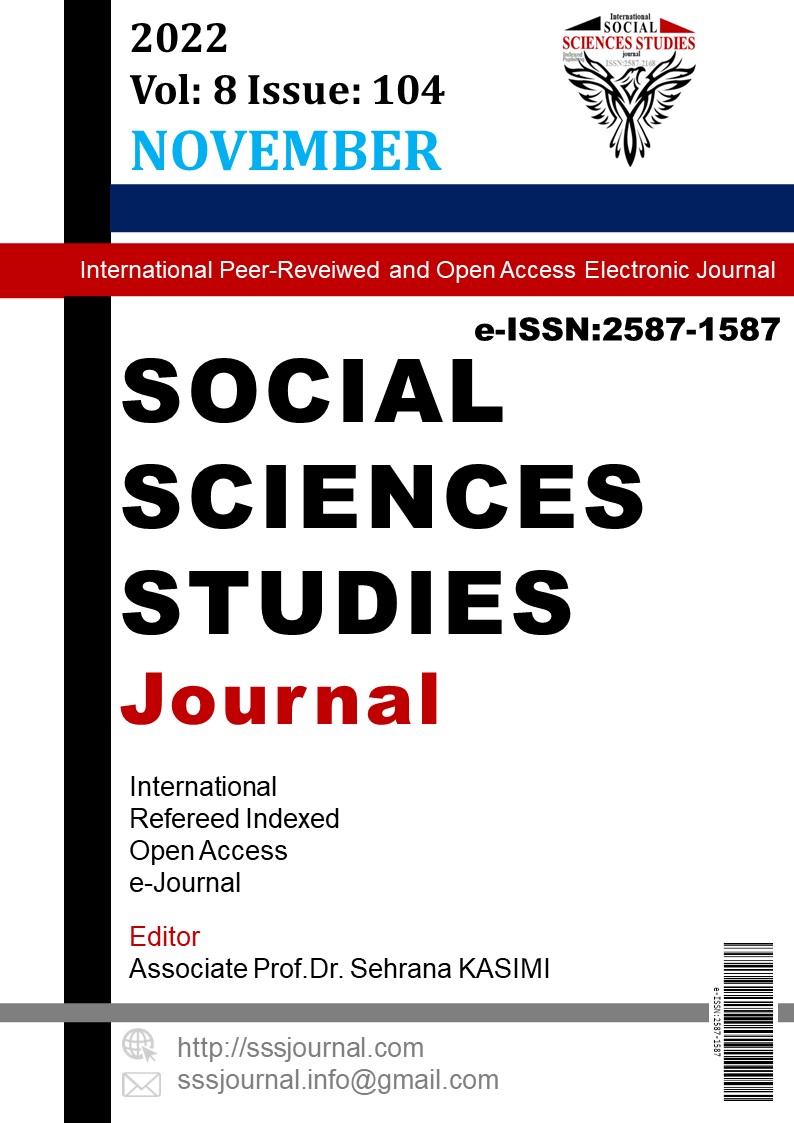Borderline (Sınır) Kişilik Örgütlenmesinin Nesne İlişkileri Kuramı Bağlamında İncelenmesi: Bir Vaka Örneği
Author :
Abstract
Borderline (sınır) kişilik örgütlenmesinin temel tanı ölçütleri; kimlik dağılması, ilkel savunma mekanizmalarının varlığı ve gerçeği değerlendirme yetisindeki bozulmalar ve benliğin güçsüzlüğü olarak tanımlanmıştır. Bu çalışmada, Kernberg’in borderline (sınır) kişilik örgütlenmesinin temel tanı ölçütlerine uyan 21 yaşındaki bir genç kadın danışanın nesne ilişkileri kuramı çerçevesinde nasıl ele alındığı anlatılmaktadır. Danışanla, bir üniversitenin klinik psikoloji doktora programı kapsamında süpervizyon sürecinde toplam on altı seans yapılmıştır. Nesne ilişkileri kuramına göre içsel dünya ve gerçek dünyanın etkileşimi ile kazanılan deneyimler kendilik (self), nesne (öteki) ve ilişkinin duygusu (afekt) olmak üzere bellekte üç alanda iz bırakmaktadır. Çalışmada danışanın olgu öyküsü sunulduktan sonra, nesne ilişkileri kuramı çerçevesinde vaka formülasyonu yapılmıştır. Psikoterapi sürecinde borderline (sınır) kişilik örgütlenmesine sahip danışanın nesne ilişkilerinin anlaşılması amaçlanarak, bütünleşmiş bir kendilik ve öteki temsilinin geliştirilmesi hedeflenmiştir. Bu bağlamda, terapistle sağlıklı bir nesne ilişkisinin inşa edilmesi çalışılmıştır. Bu makalede, nesne ilişkileri kuramı çerçevesinde borderline kişilik örgütlenmesine sahip danışan ile yapılan psikoterapi süreci yorumlanmıştır.
Keywords
Abstract
The main diagnostic criteria of borderline personality organization are defined as identity dissolution, the presence of primitive defense mechanisms, impairments in the ability to assess reality, and weakness of the self. In this study, how a 21-year-old female client who meets the basic diagnostic criteria of Kernberg's borderline personality organization was studied within the framework of object relations theory was explained. A total of sixteen sessions were conducted with the client during the supervision process within the scope of a university's clinical psychology doctoral program. According to the object relations theory, the experiences gained through the interaction of the inner world and the real world leave traces in three areas of memory: the self, the object (the other), and the feeling of the relationship (affect). After presenting the case history of the client in the study, the case formulation was made within the framework of object relations theory. The psychotherapy process is aimed to develop an integrated representation of self and others by seeking to understand the object relations of the client with borderline personality organization. In this context, it has been tried to build a healthy object relationship with the therapist. In the current study, the process of psychotherapy with a client with borderline personality organization within the framework of object relations theory was interpreted.
Keywords
- 1. Baum, N. (2006). “A Kleinian Perspective on the Divorce Process: From The Paranoid-Schizoid to the Depressive Position”, Clinical Socail Work Journal, 34(3): 279-292.
- 2. Bokanowski, T. (2008). Olumsuz Aktarımlar ve Aktarımda Nefret (Çev.:Elda Abrevaya), Psikanaliz Yazıları, 17, İstanbul Bağlam Yayınları, İstanbul.
- 3. Calabrese, M. L., Farber, B. A. & Westen, D. (2005). “The Relationship of Adult Attachment Constructs to Object Relational Patterns of Representing Self and Others”, Journal of the American Academy of Psychoanalysis and Dynamic Psychiatry, 33(3): 513-530.
- 4. Chabert, C. (2008). Sınır İşleyişler: Hangi Sınırlar? (Çev.:Zeren Okçuoğlu-Talat Parman), Psikanaliz Yazıları, 16, İstanbul Bağlam Yayınları, İstanbul.
- 5. Gabbard, G. O. (2014). Psychodynamic Psychiatry in Clinical Practice, American Psychiatric Publishing, Washington.
- 6. Geçtan, E. (2003). Psikodinamik Psikiyatri ve Normaldışı Davranışlar, Metis Yayınları, İstanbul.
- 7. Gunderson, J. G., Kerr, J. & Englund, D. W. (1980). “The Families of Borderlines: A Comparative Study”, Archives of General Psychiatry, 37(1): 27-33.
- 8. Gunderson, J. G. & Elliott, G. R. (1985). “The Interface Between Borderline Personality Disorder and Affective Disorder”, American Journal of Psychiatry, 142: 277-288.
- 9. Guntrip, H. (2013). Şizoid Görüngü Nesne İlişkileri ve Kendilik (Çev.:İpek Babacan), Metis Yayınları, İstanbul.
- 10. Gürdal Küey, A. (2008). Karşı Aktarım Kavramının Gelişimi. Psikanaliz Yazıları, 17, İstanbul Bağlam Yayınları, İstanbul.
- 11. Katz, B. (1981). “Separation–Individuation and Marital Therapy”, Psychotherapy: Theory, Research and Practice, 18(2): 195.
- 12. Kernberg, O. F. (1972). “Early Ego Integration and Object Relations”, Annals of the New York Academy of Sciences, 193(1): 233-247.
- 13. Kernberg, O. F. (1975). Borderline Conditions and Pathological Narcissism, Jason Aronson, New York.
- 14. Kernberg, O. F. (1980). Internal World and External Reality: Object Relations Theory Applied, Jason Aronson, New York.
- 15. Knight, R. P. (1953). “Borderline States”, Bulletin of the Menninger Clinic, 17: 1-12.
- 16. Levy, K. N., Meehan, K. B., Kelly, K. M., Reynoso, J. S., Weber, M., Clarkin C. F. & Kernberg, O. F. (2006). “Change in Attachment Patterns and Reflective Function in a Randomized Control Trial of Transferencefocused Psychotherapy for Borderline Personality Disorder”, Journal of Consulting and Clinical Psychology, 74: 1027 – 1040.
- 17. Masterson, J. F. (1976). Psychotherapy of the Borderline Adult: A Developmental Approach, Brunner/Mazel,
- 18. Masterson, J. F. (2013). Treatment of the Borderline Adolescent: A Developmental Approach, Routledge.
- 19. McWilliams, N. (2010). Psikanalitik Tanı: Klinik Süreç İçinde Kişilik Yapısını Anlamak (Çev.:Erkan Kalem), İstanbul Bilgi Üniversitesi Yayınları, İstanbul.
- 20. Morrison, J. (2016). DSM-5' i Kolaylaştıran Klinisyenler İçin Tanı Rehberi, Nobel, Ankara.
- 21. Odağ, C. (2017). Nevrozlar-I, Odağ Psikanaliz ve Psikoterapi Eğitim Hizmetleri, Org. Ltd. Şti. Yayınları No:3, İzmir.
- 22. Ogden, T. (2018). Şu Psikanaliz Sanatı Görülmemiş Rüyaları Görmek, Kesintiye Uğramış Çığlıkları Duymak,
- 23. Parman, T. (2008). Psikanalizin Sınırlarında: Margaret I. Little’ın Winnicott ile Yaptığı Analiz. Psikanaliz Yazıları, 16, İstanbul Bağlam Yayınları, İstanbul.
- 24. Rockland, L.H. (2016). Borderline Hastalar İçin Destekleyici Terapi (Çev.:Melike Feyza Yönten), Psikoterapi Enstitüsü Eğitim Yayınları, Kocaeli.
- 25. Segal, H. (1973). Introduction to the Work of Melanie Klein, The Hogarth Press, London.
- 26. Stern, A. (1945). “Psychoanalytic Therapy in the Borderline Neuroses”, Psychoanalytic Quarterly, 14: 190-198.
- 27. Tura, S. M. (2000). Günümüzde Psikoterapi, Metis Yayınları, İstanbul.
- 28. Volkan, V. (2015). 6 Adımda Borderline Kişilik Organizasyonunun Tedavisi, Pusula Yayınevi, Ankara.
- 29. Winnicott, D. W. (1960). Ego Distortion in Terms of True and False Self. The Maturational Processes and the Facilitating Environment, Karnac, London.





